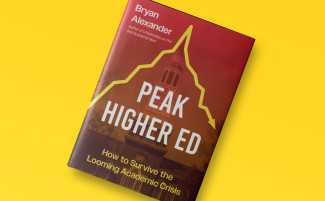
Johns Hopkins UniversityEst. 1876
America’s First Research University
Writing our own story
By Brian Shea, Public Relations and Advertising Coordinator, Journals Division
I have lunch on occasion with a group of fellow employees who like to write. Even though we work with the words of other writers on a daily basis, a number of us have our own writing ambitions. Some of us blog on our own. Others dabble in poetry and fiction. A few even contribute to their local newspaper. (The work of the Press keeps us all busy and not all departments work together on a regular basis.)
At one of those lunches last year, we decided to throw down the gauntlet and have fun at the same time. We put out a challenge to the writers across the company: let's create a progressive story which may or may not make sense. Each staff member who signed up for the activity would contribute 100 words to the story with just one catch—they could only see the 100 words preceding their entry. Writing blind, so to speak. With creative people from every corner of the Press involved, we'd surely produce interesting results.
The three stories—one focused on Halloween and another with a holiday theme followed the first effort—have not disappointed in this regard.Writers who did not know the two main characters were siblings added a romantic element to the story near the end. New characters randomly emerged. Santa Claus and Frosty the Snowman even had a showdown.
Flying over the crowd of revelers, Santa began to drop ornaments onto the approaching army. “Take that!” Santa said. “Let it snow, let it snow, let it snow.” All was going well until (new author) the smell of gingerbread cookies penetrated Santa’s nose. When he hastily prepared his cache of weapons, he forgot to eat. An enemy reconnaissance team took note of this fact and set up a large-scale cookie-baking operation along Santa’s projected path in order to create a diversion. Frosty knew the jolly old elf’s one weakness and laughed manically when he heard reports of how Santa’s assault had slowed.
This extracurricular activity might not have a huge outward impact on the work we do at the JHU Press, but writers came from each division—Books, Journals, HFS (Hopkins Fulfillment Services), and Project MUSE—and forged new relationships. Manuscript editors saw the creativity lurking inside a customer service representative. Marketing staff showed they have range beyond catalog descriptions. Computer gurus unleashed their literary might.
The stories may go no further than internal distribution, but the process helped form a more cohesive bond between employees who may have had few opportunities to work together otherwise. This kind of teamwork can only benefit authors and editors in the long run. We really do care about the words on the page because many of us have that same ambition.

